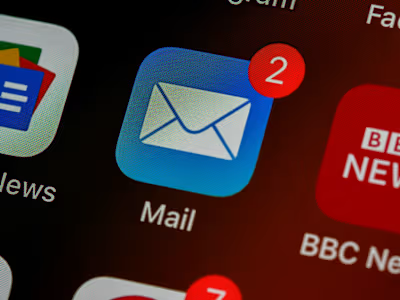Key Verification
Key verification is an important security measure to take before a person or company starts using a new device.
There have been many news reports about hackers hijacking people’s personal email accounts and social media profiles by successfully taking over their devices in recent months. Once they get access to the victim’s accounts, they can use them for their benefit or sell them on the black market.
A few simple steps can help you prevent a hacker from taking over your account. One of these steps is to verify your key with the available services. Implementation of end-to-end encryption can come along to boost the security of a device.
End-To-End Encryption On Different Devices
“End-to-end encryption” is a form of encryption that prevents third parties from intercepting messages.
It works by using a “key,” which is created by the two people who are sending the message. The sender uses their key to encrypt the data before sending it to the recipient so that only the recipient can decrypt it.
End-to-end encryption is often used in chat apps like WhatsApp and iMessage, as well as email services like Gmail. It means that when using these platforms, a hacker cannot access your information if they don’t have the keys. This security measure has been mandated by law in some countries. Russia and China have a law where authorities banned certain messenger apps for not enabling end-to-end encryption on their messaging service.
How Key Verification Works In Details
Key verification is a process for validating the authenticity of cryptographic keys, usually those used to authorize access to information. It is an important step in the key distribution lifecycle.
Many types of key verification exist, but they all have some things in common. First, they are used for one-time use keys or symmetric keys that will be used only once. Second, they must ensure that the key being validated is not changed during the validation process; otherwise, the validation process will fail and be fruitless.
Thirdly, these methods vary from person to person, so it’s vital that proper training is undertaken before using any of them. Some prefer to do face-to-face verification, more so when handling sensitive information. Others can use other messaging mediums to verify the key provided the platform is more secure than the one in use.
Verifying Keys in Person
When talking about verifying keys in person, it’s most accessible and ideal. Here, you will meet with your friend, colleague, or partner and do the verification face-to-face. It’s even better because you will not have to bother about impersonation or phishing attempts prevalent on social media handles.
You can read aloud the characters in the public key fingerprint to your partner, and you double-check if it’s correct and matching the other. Though it’s tedious, it is worth all your effort. Though when using different applications, each one has a unique way of checking the fingerprints. One app may require you to scan a QR code onto your friend’s user device to complete the verification process. Another will give characters that you have to read to ensure it matches your partners in order for the process to be successful.
For example, if you’re meeting your friend Elsa and need to verify your keys, you will decide on the best method. Both of you will be required to use a preferred messaging application like Signal or WhatsApp to transact your business. You may use the QR code option for WhatsApp to verify the keys or consider using the characters as per your preference. But considering the close proximity, verifying using the code is more beneficial and accurate.
Verifying Keys Using Other Secure Medium
In this case, if Elsa was far away and you need to continue chatting, you could verify the keys over a specific medium. Here you will need to use a more secure platform to do verification of keys. Consider using a telephone to read to the other person the character aloud or use an OTR chat to pass the information to the other end.
For instance, if Elsa is in a different city and wants to verify the keys, call her via the phone to read the characters. At your end, you will be keying in the characters to verify both ends. If they match, the verification will be successful, and you can now proceed to use the messaging application.
This is a process that is similar in all applications since there is no designed rule governing key verification. WhatsApp, Signal, and other apps have no universal term that makes this practice simple. In fact, what differs is the method the individual app use for verification. The commonly used key verification process is counter-checking fingerprint characters with your friends to ensure they are matching. But, you will have to use the one provided by the application in use.
Regardless of the application, you’re using; usually, you will be able to access your key and that of your conversation friend. However, it varies from one app to the other, but the verification procedures are more alike. All you have to do is ensure that when copying the fingerprint characters, eliminate no letter or number.
In case you miss a number, the verification will fail because the characters won’t match your friend’s or colleague. So, be keen when copying the characters to spare yourself the hustle of having many failed attempts to verify successfully.
Lastly, sometimes the keys may change. This happens in the end-to-end encryption apps when your friend changes to a new phone. In case this happens, the old key will not work, making it difficult to reach your friend. So, be on the lookout to note when your partner’s key changes. If they are purchasing a new phone, they should tell you in advance. Or, if they lose the device they are using and replaces another, inquire with them and redo the verification again. You can consider meeting for in-person verification or do it over a secure medium to get the new key.
Like this project
Posted Nov 18, 2024
Key verification is an important security measure to take before a person or company starts using a new device.








